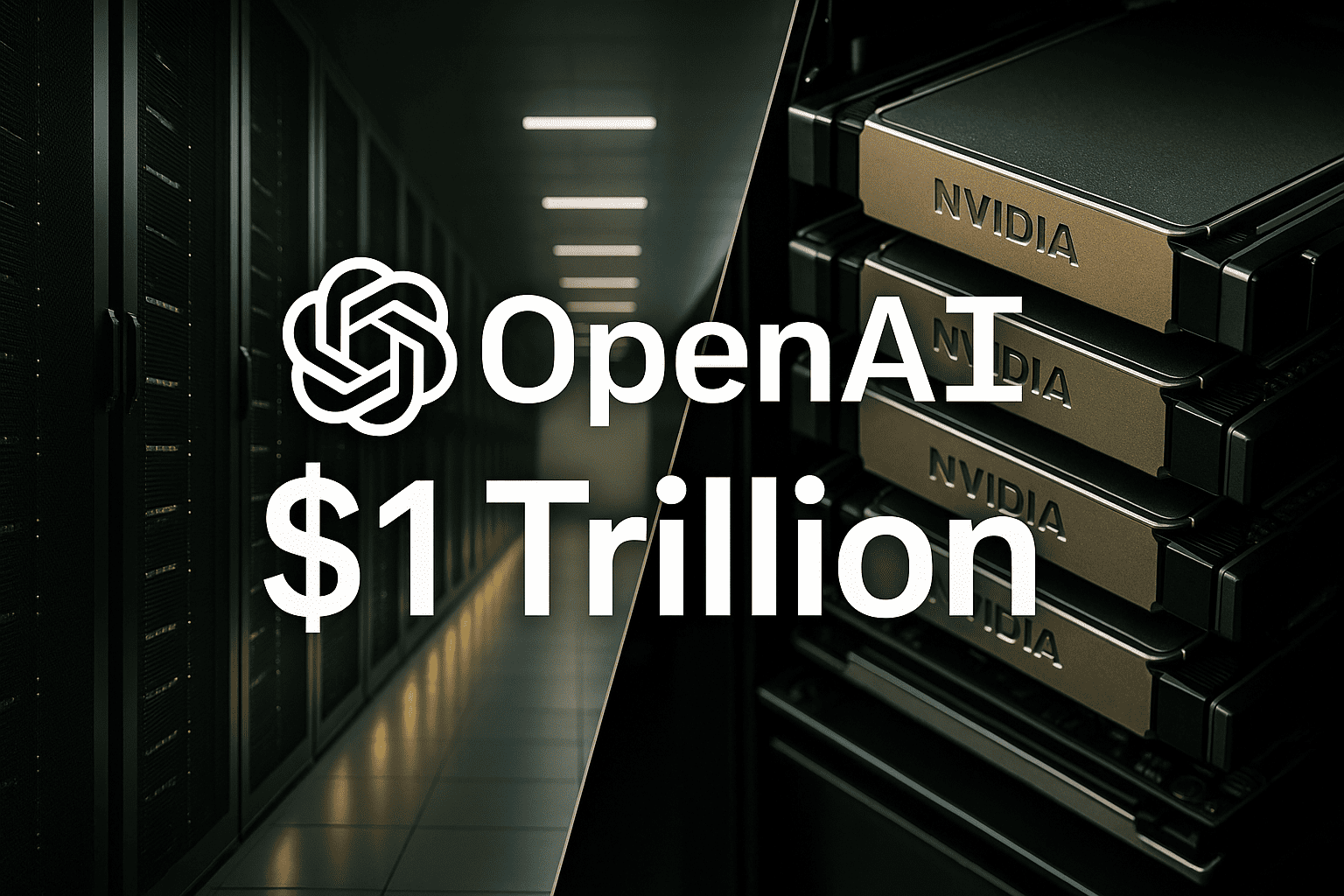OpenAI Clocks $1 Trillion in Compute Deals This Year
By Tredu.com • 11/4/2025
Tredu

What happened, and why it matters
OpenAI clocks $1 trillion in compute deals this year, a figure that aggregates multi-year agreements across several providers to secure chips, networking, power, and data-center space. Put simply, the company is pre-booking the infrastructure it needs for successive model families, then phasing deliveries so that training clusters, retrieval systems, and inference fleets come online in a steady cadence. The headline number is not a single purchase order, it is a stack of capacity lanes that align vendor capital plans with OpenAI’s roadmap. The framing in the Meta Title, OpenAI $1 Trillion Compute Deals This Year | Tredu, captures the direction of travel and the scale involved.
How the commitments are structured
The agreements resemble take-or-pay cloud contracts more than spot hardware buys. OpenAI reserves time on clusters built around Nvidia accelerators and matching high-bandwidth memory, optical interconnects, storage, and liquid-cooling. Delivery is staged, often in quarterly tranches. That structure lets OpenAI time cash outlays to energization events, it also gives suppliers predictable demand that supports factory expansions and long-lead orders for substations and transformers.
Why the total is so large
Frontier training requires dense compute and fast networks, inference at consumer and enterprise scale requires availability across regions and time zones. Meeting both needs simultaneously means duplicating capacity, building redundancy, and aligning with local rules on privacy and sovereignty. The trillion-dollar tally reflects those realities, plus the cost of power infrastructure that must be booked years ahead. The approach looks less like a traditional software spend, more like a utility plan that pairs demand forecasts with committed supply.
Where AWS and other partners fit
One pillar is the newly announced AWS capacity lane. It diversifies OpenAI’s cloud mix, reduces delivery risk tied to any single region, and places training clusters close to large enterprise customers. Other partners provide complementary lanes, for example regions optimized for inference or for data proximity. The result is a portfolio in which workloads can be shifted as models mature, so that expensive training nodes are reused for fine-tuning and then handed off to lower-cost inference fleets.
Supply constraints beyond GPUs
Chips are necessary, not sufficient. High-bandwidth memory, optical links, network switches, power distribution units, and chillers decide whether a building can reach planned throughput. The deals therefore bundle full stacks, not only GPU counts. Vendors commit to matching components, while power contracts and grid interconnects determine when halls can be energized. That is why schedules emphasize energization milestones and acceptance tests, rather than a single ship date.
Economics and risk management
Capacity insurance is costly, yet delivery misses are costlier if product roadmaps slip. Multi-year contracts convert some variable risk into fixed obligations, then seek protection through indexing, upgrade paths, and reallocation rights. Utilization is the swing factor. If training runs and inference demand fill the lanes, unit economics improve as fixed costs are absorbed. If workloads lag, take-or-pay terms can pinch margins. OpenAI’s counter is to increase efficiency per token, lift enterprise attach, and recycle clusters quickly from research to production.
Operational cadence from here
The near-term playbook is predictable. New halls accept initial racks, burn-in testing validates thermals and networking, early training jobs establish baselines, and monitoring tools calibrate utilization. As models graduate from research to product, inference fleets expand in regions with favorable power and latency. Older clusters become fine-tuning and evaluation pools. This rotation keeps average utilization high and shortens the payback period on each tranche of capacity.
Competitive landscape
Every model developer is racing for guaranteed compute. The difference is the size and duration of commitments. By aggregating $1 trillion of compute deals this year, OpenAI raises the bar for peers and puts pressure on upstream suppliers to prioritize contracts with the most predictable off-take. The strategy also strengthens bargaining power on pricing, delivery windows, and upgrade options, since suppliers prefer anchor tenants who help justify capital additions.
What investors and partners will watch
Three signposts will test execution. First, throughput, measured as training tokens per dollar and time-to-convergence for the next model family. Second, revenue mix, especially enterprise seats, API usage, and attach of safety and orchestration tools that monetize inference without spiking latency. Third, reliability, since service-level performance across regions will show whether capacity lanes are arriving in sync with demand. Clear progress on these markers validates the case for locking in long-dated supply.
Policy and geography
Export controls, local-content rules, and energy policy shape where clusters can be placed. The contract architecture reflects that constraint set. Some regions prioritize data residency, others prioritize power availability or renewable content. A diversified provider base, with multiple jurisdictions and grid relationships, lowers the probability that a single policy shift derails a model release.
Bottom line
OpenAI $1 Trillion Compute Deals This Year signals a decisive shift from opportunistic capacity to industrial-scale reservations. By committing early to chips, power, and data centers, OpenAI aims to protect its training schedule and serve global inference with fewer bottlenecks. Success now depends on utilization, efficiency, and steady execution as each capacity lane turns into reliable, revenue-generating compute.

How to Trade Like a Pro
Unlock the secrets of professional trading with our comprehensive guide. Discover proven strategies, risk management techniques, and market insights that will help you navigate the financial markets confidently and successfully.


